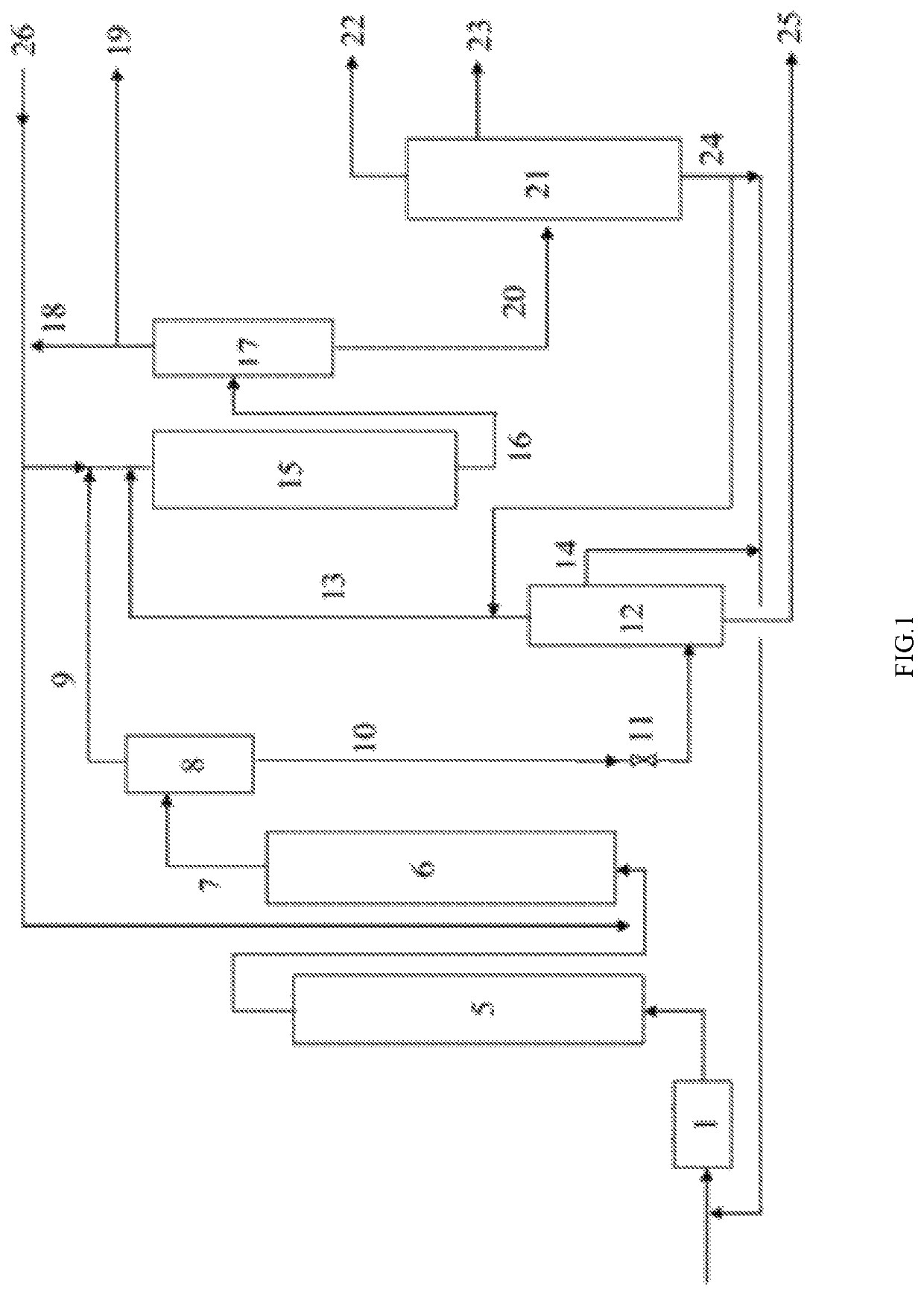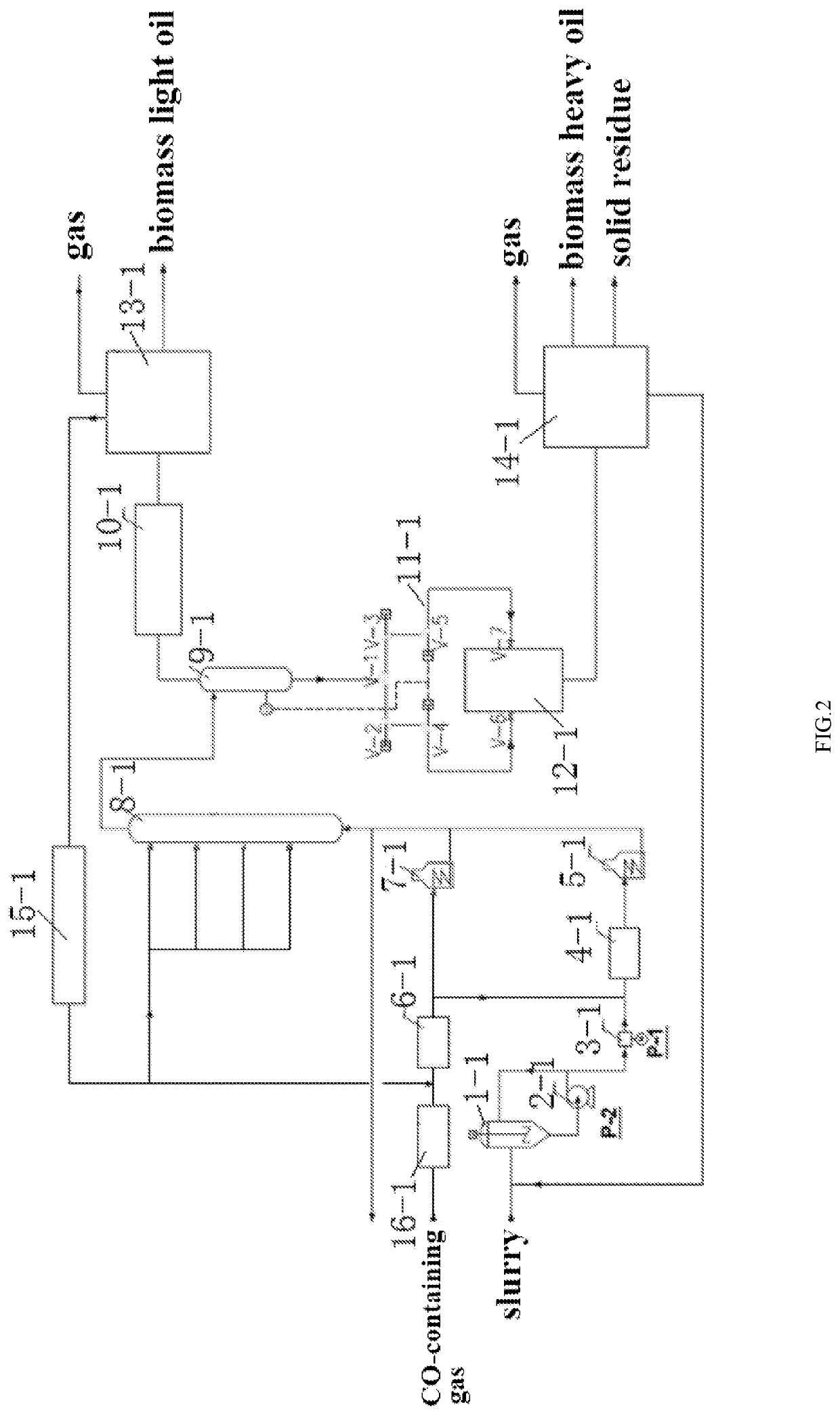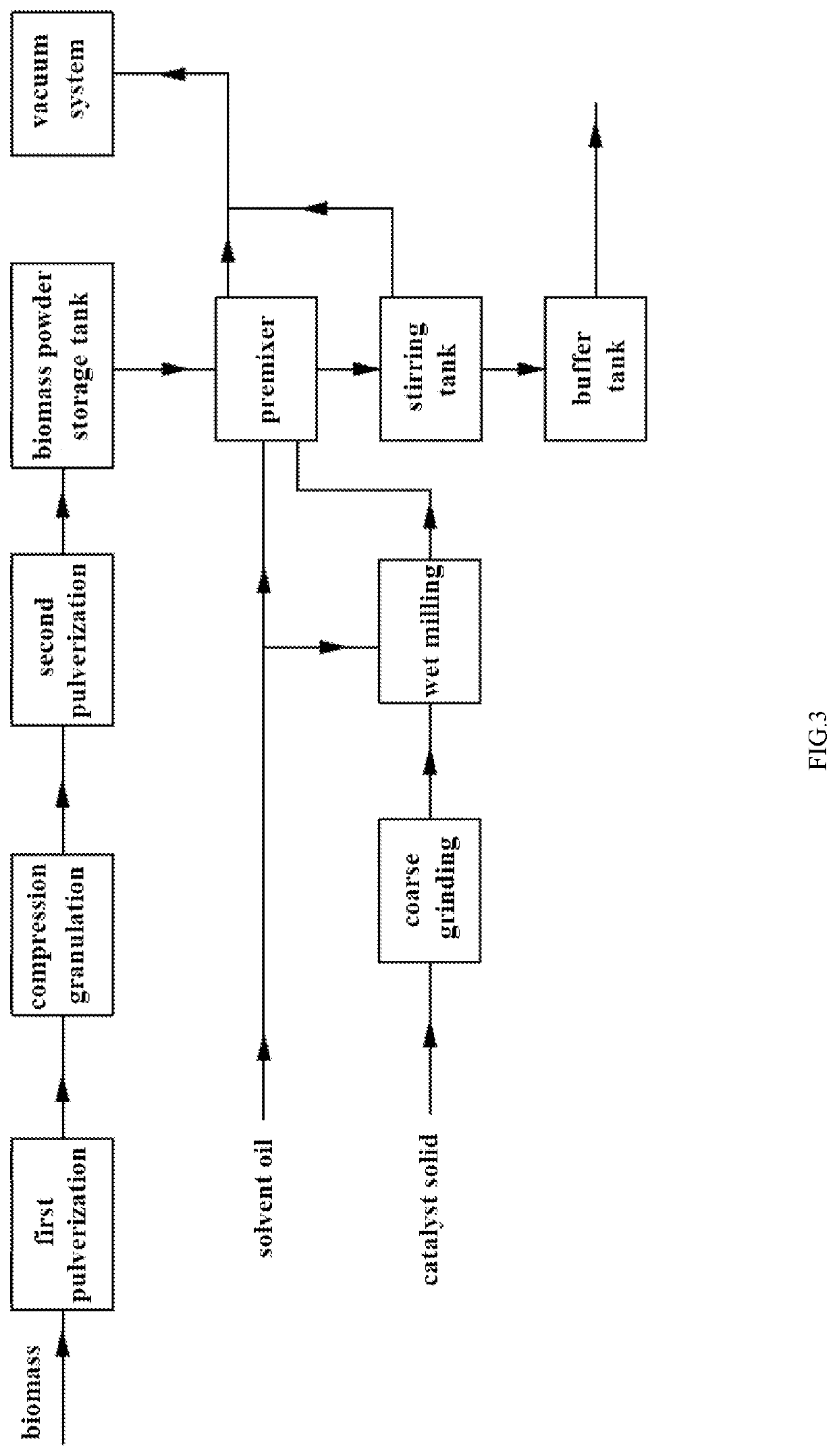Conversion process for an organic material
a conversion process and organic material technology, applied in the field of biomass utilization, energy and chemical industry, can solve the problems of low waste water production, achieve low calorific value of ail, high calorific value, and reduce waste water production
- Summary
- Abstract
- Description
- Claims
- Application Information
AI Technical Summary
Benefits of technology
Problems solved by technology
Method used
Image
Examples
embodiment 1
[0157]Provided is a co-conversion process for biomass and hogwash oil, described as below:
[0158]Pretreatment of Biomass:
[0159]Rice straw and reed straw are used as biomass solids. The bio biomass solids have a moisture content of 4% based on the total weight of the biomass. The rice straw and reed straw are fed to an ultrafine pulverizer for initial pulverization to a median particle size of 100 μm, then fed into a briquetting press for compressing at a temperature of 30° C. and a pressure of 3 MPa, and then extruded and molded to a bulk density of 0.8 g / cm3, and then subjected to a second pulverization to produce a pretreated biomass having an average particle size of 3 mm.
[0160]Catalyst:
[0161]A waste agent resulting from use of a desulfurizer comprising FeOOH as an active component is used as a catalyst. The desulfurizer comprises 6 g soluble iron salt Fe(NO3)3.9H2O, 9 g iron salt complexing agent triethanolamine, and 15 g amorphous iron hydroxyl oxide.
[0162]The waste agent is pro...
embodiment 2
[0168]Provided is a co-conversion process for a biomass and palm oil, described as below.
[0169]Pretreatment of Biomass:
[0170]Wheat straw and corn straw are used as biomass solids. The biomass solids have a moisture content of 10% based on the total weight of the biomass. The wheat straw and corn straw are fed to an ultrafine pulverizer for initial pulverization to a median particle size of 300 μm, which are then fed into a briquetting press for compressing at a temperature of 60° C. and a pressure of 0.5 MPa, and then extruded and molded to a bulk density of 0.9 g / cm3, and then subjected to a second pulverization to produce a pretreated biomass having an average particle size of 5 mm.
[0171]Catalyst:
[0172]A waste agent resulting from use of a desulfurizer comprising iron oxide as an active component is used as a catalyst. The desulfurizer comprises 10 g calcium bicarbonate, 12 g basic cupric carbonate, 18 g γ-Fe2O3, 8 g MnO2, and 5 g NiO.
[0173]The waste agent is produced by a desulfu...
embodiment 3
[0182]Provided is a co-conversion process for biomass and petroleum base wax oil as below.
[0183]Pretreatment of Biomass:
[0184]Cotton straw is used as biomass solid. The biomass solid has a moisture content of 1% based on the total weight of the biomass. The cotton straw is fed to an ultrafine pulverizer for initial pulverization to a median particle size of 200 μm, then fed into a briquetting press for compressing, extruding and molding at a temperature of 40° C. and a pressure of 2 MPa to a bulk density of 0.9 g / cm3, then subjected to a second pulverization to produce a pretreated biomass having an average particle size of 1 mm.
[0185]Catalyst:
[0186]Amorphous FeOOH is used as a catalyst.
[0187]Adding sulfur: Solid sulfur powder is added to the above catalyst until the molar ratio of iron element to sulfur element reaches 1:2, thereby ensuring that the molar ratio of iron element to sulfur element in the reaction system is 1:2.
[0188]Preparation of Biomass Slurry:
[0189]The pretreated b...
PUM
| Property | Measurement | Unit |
|---|---|---|
| temperature | aaaaa | aaaaa |
| pressure | aaaaa | aaaaa |
| reaction time | aaaaa | aaaaa |
Abstract
Description
Claims
Application Information
 Login to View More
Login to View More - R&D
- Intellectual Property
- Life Sciences
- Materials
- Tech Scout
- Unparalleled Data Quality
- Higher Quality Content
- 60% Fewer Hallucinations
Browse by: Latest US Patents, China's latest patents, Technical Efficacy Thesaurus, Application Domain, Technology Topic, Popular Technical Reports.
© 2025 PatSnap. All rights reserved.Legal|Privacy policy|Modern Slavery Act Transparency Statement|Sitemap|About US| Contact US: help@patsnap.com



